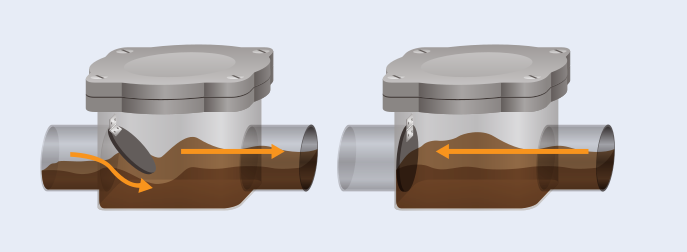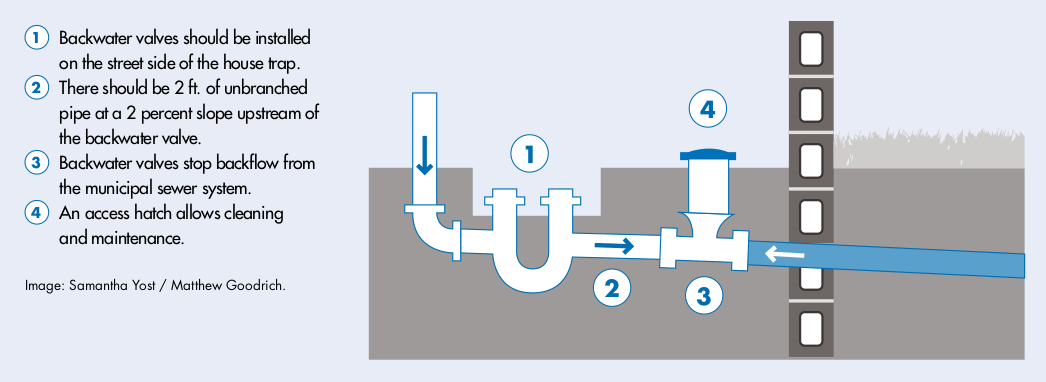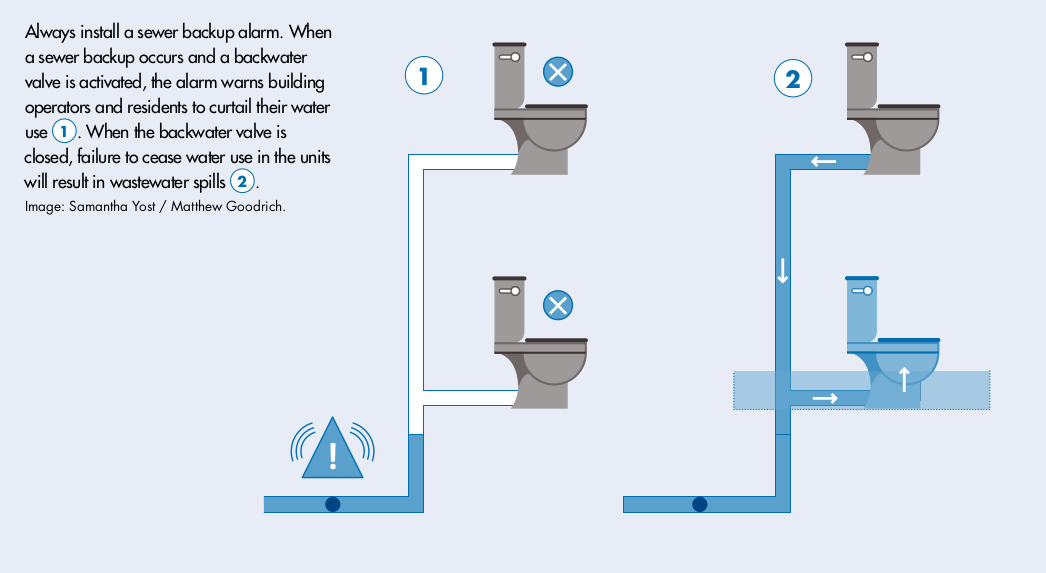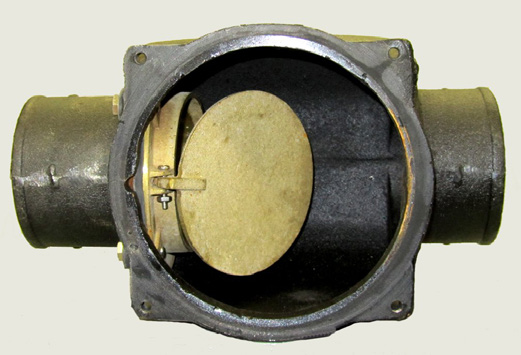5.8a Resilient Energy Systems:
Floodproofing
Description + function
Image: Colin Hayes.
Backwater valves are installed where the wastewater pipe exits the building, so sewage only flows outward. Valves have a hinged flapper that remains open to allow outward flow, but seals tightly if there is backpressure.

Backwater valves are situated above the external sewer line and should be installed in buildings that have sewer connections below the highest manhole cover in the sewer system, especially if the property is within the Special Flood Hazard Area (SFHA). Although sewer blockage can occur any time, it is most likely to happen during storms when large amounts of water and debris move through the system.
Strategy into action
Municipal codes often require the installation of backwater valves in new construction sited in flood zones. Property owners outside flood zones should also consider backwater valves because sewers can back up any time, not just during extreme weather events. Building codes may also prohibit backwater valves. A plumbing professional will be able install a code-compliant system.
Backwater valves should be installed on the street side of the house trap. Improper installation could cause the trap to fail. To ensure smooth flow, there should be at least 2 ft. of un-branched pipe upstream of the backwater valve.

Depending on its size and the configuration of drain piping in the basement, a building may have just one backwater valve connected to the main sewer line, or separate valves may be installed on different lines and drains. Backwater valves should be enclosed in a masonry pit with a waterproof cover giving access for cleaning and maintenance.

Operations + maintenance
Inspect backwater valves frequently to ensure there is no debris in the device or cleanout port and the valve functions properly.
Cast-iron backwater valves may be damaged in areas with salt water and heavy minerals in the water. Check them regularly for rust and internal corrosion.
Should the backwater valve be closed to prevent stormwater from entering the building, it would also prevent stormwater collected onsite from leaving, causing flood damage inside the building. Consider other options for managing stormwater onsite, such as storing it in rainwater cisterns or infiltrating the water into the site.
Estimated cost
- $
- $$
- $$$
- $$$$
Supporting strategies
Resources
- How Much Does a Backflow Preventer Cost? Cost Helper. home.costhelper.com/backflow-preventers.html
- Sewer Backwater Valves, LA Department of Building and Safety. ladbs.org/LADBSWeb/LADBS_Forms/Publications/backwater_valves.pdf
- Sewer Maintenance Tips, Lamont Public Utility District. lpud.org/sewer-tips/
Background
With a restaurant on the ground floor and six housing units above, 141 Fifth Ave. is one of 56 affordable multifamily buildings in South Brooklyn owned and managed by Fifth Avenue Committee (FAC), a non-profit community development organization. It is in the unshaded X flood zone – above the 500-year flood line – but basement stormwater flooding is a constant challenge. During heavy rains – up to 10 times a year – the basement fills with about 1 ft. of water.
Strategy
In 2011, FAC installed a backwater system at 141 5th Ave. A sump pump removes water that builds up when it rains, and the backwater valve prevents additional stormwater from forcing its way into the building. The building manager has also implemented a flood action plan. Staff are trained in system operation and communication protocols that alert residents to stop using water fixtures when the valve is engaged.
Cost
$3,000 for installation.

